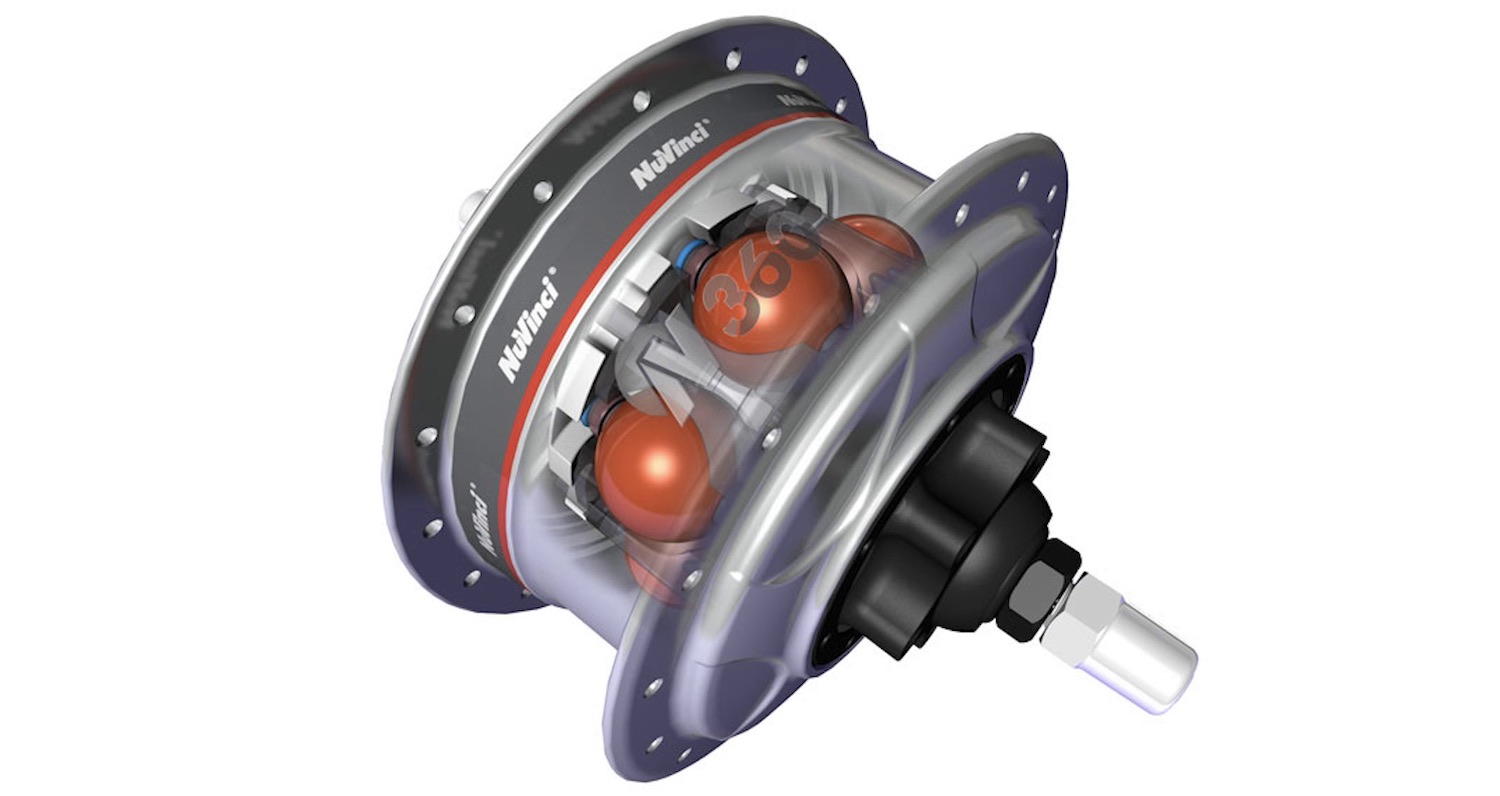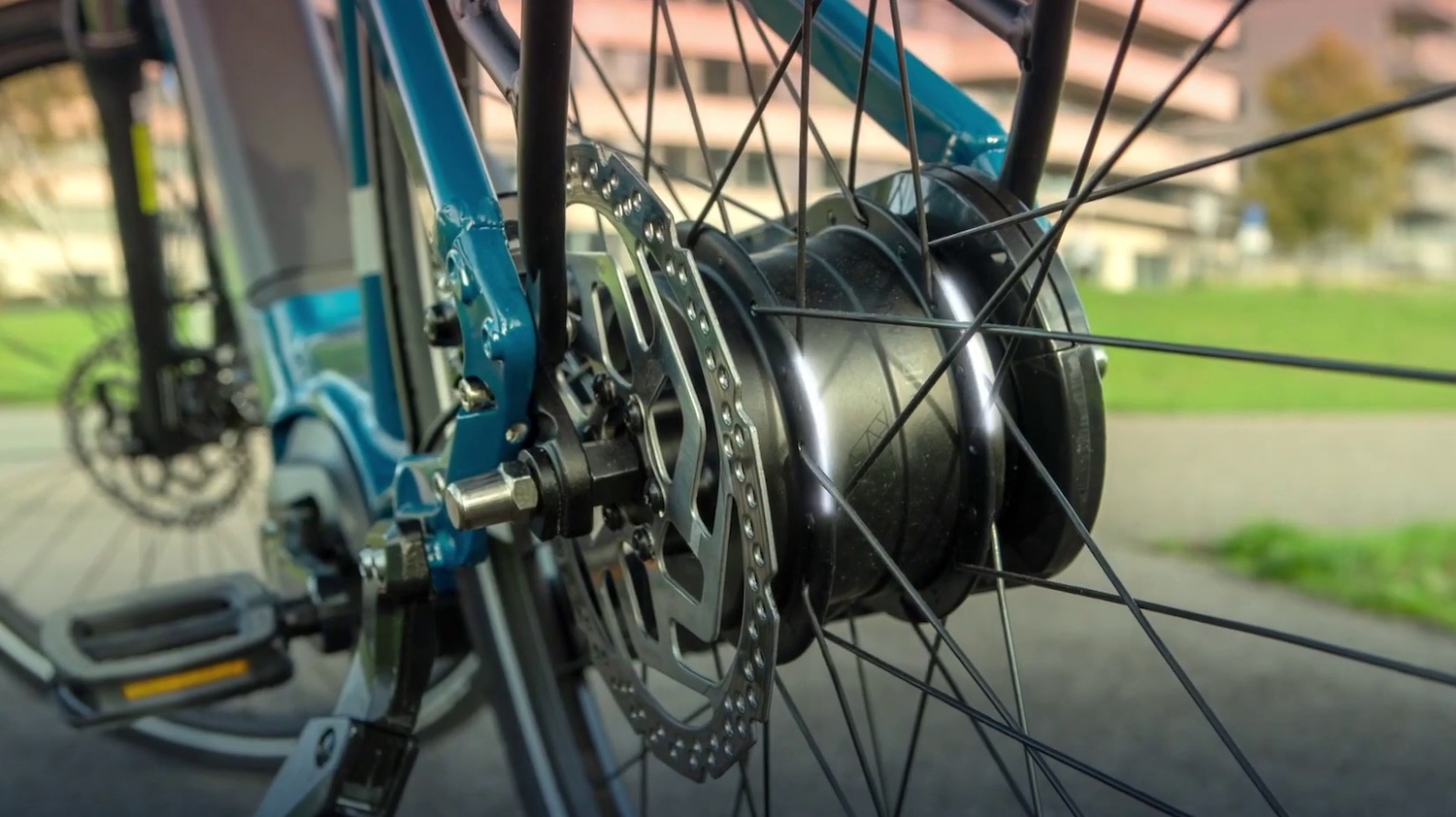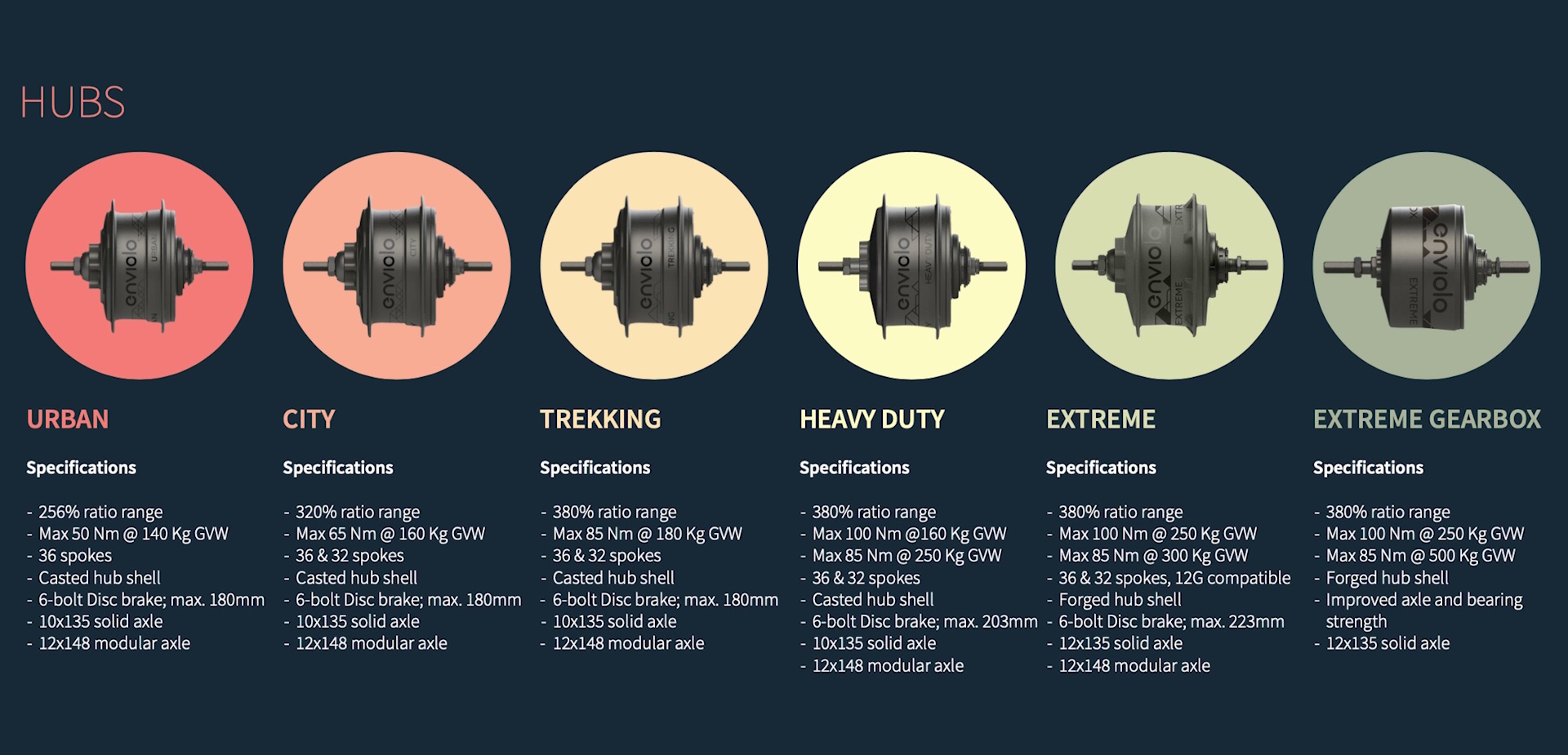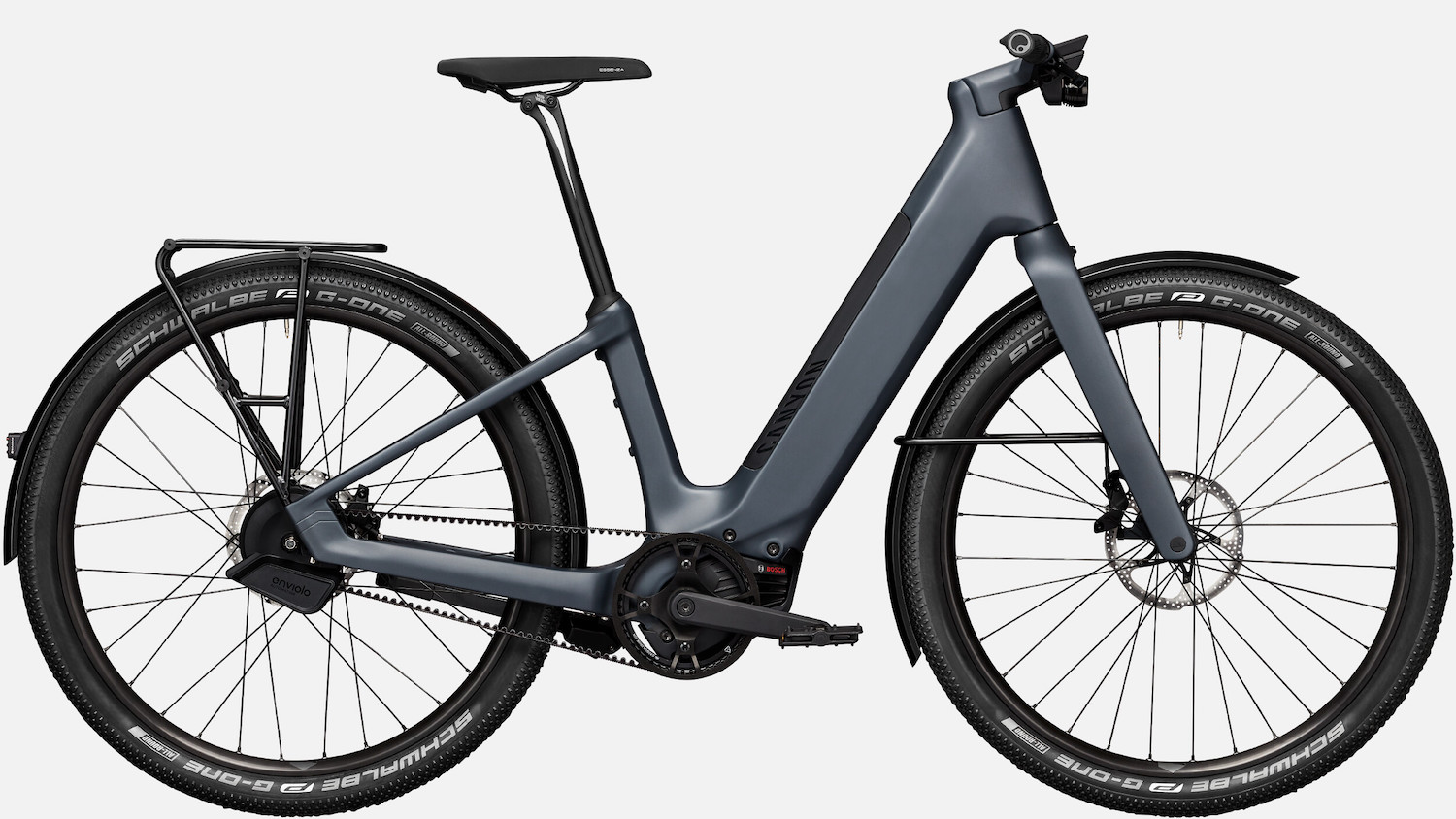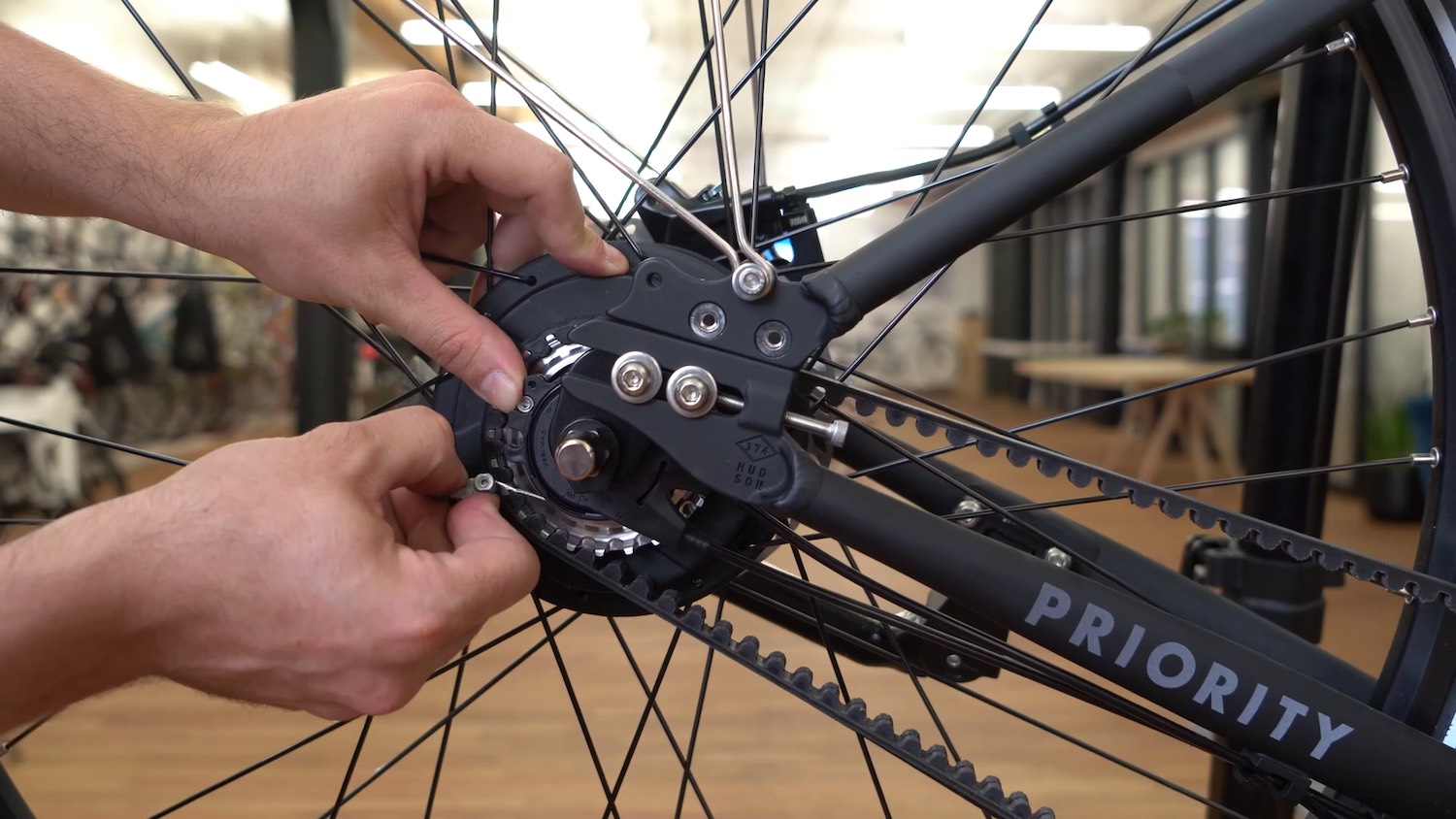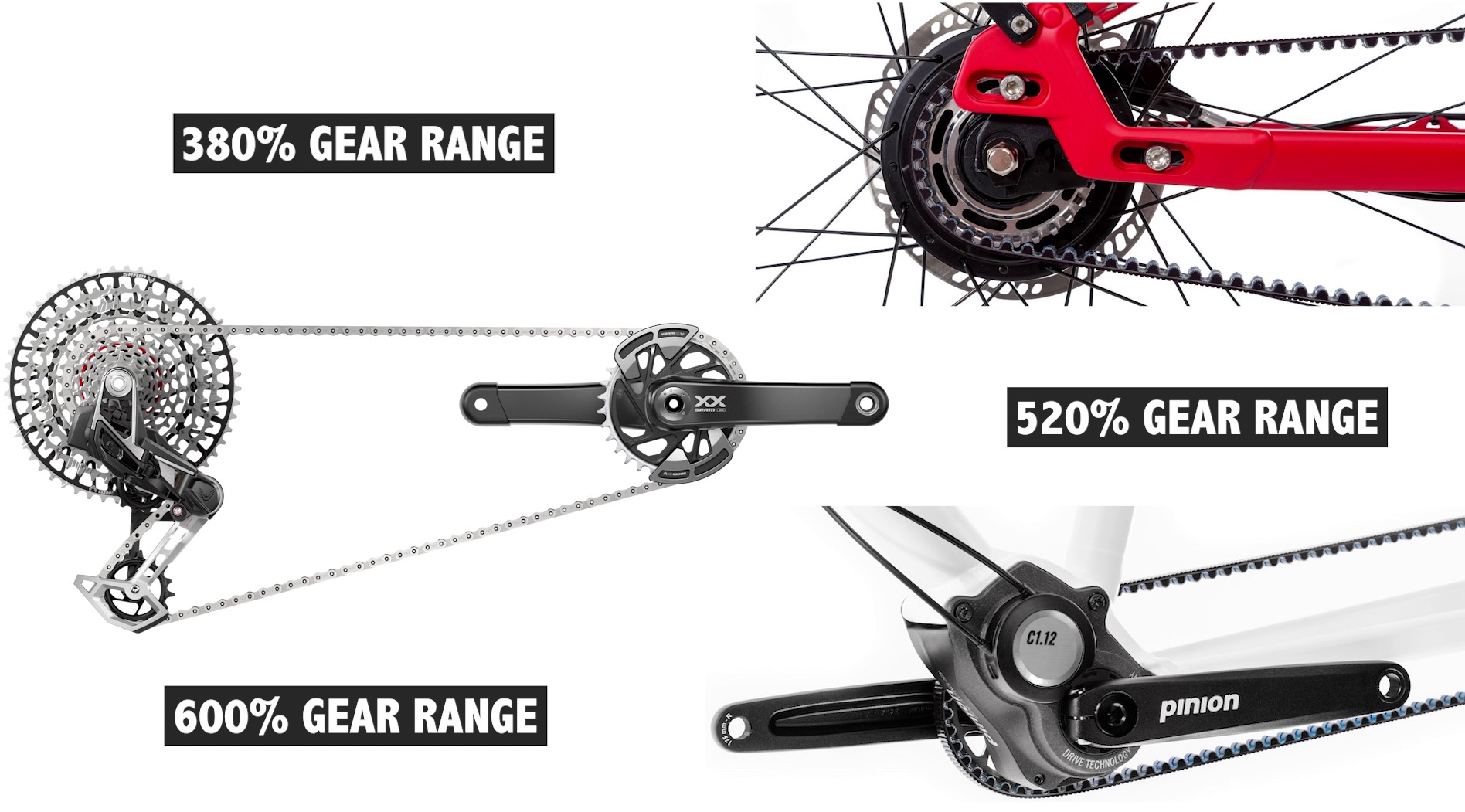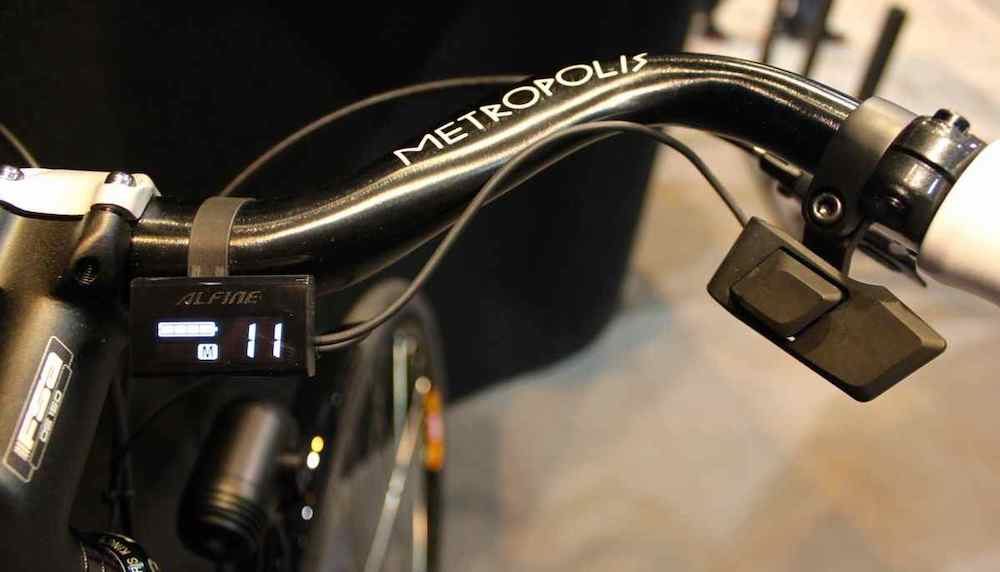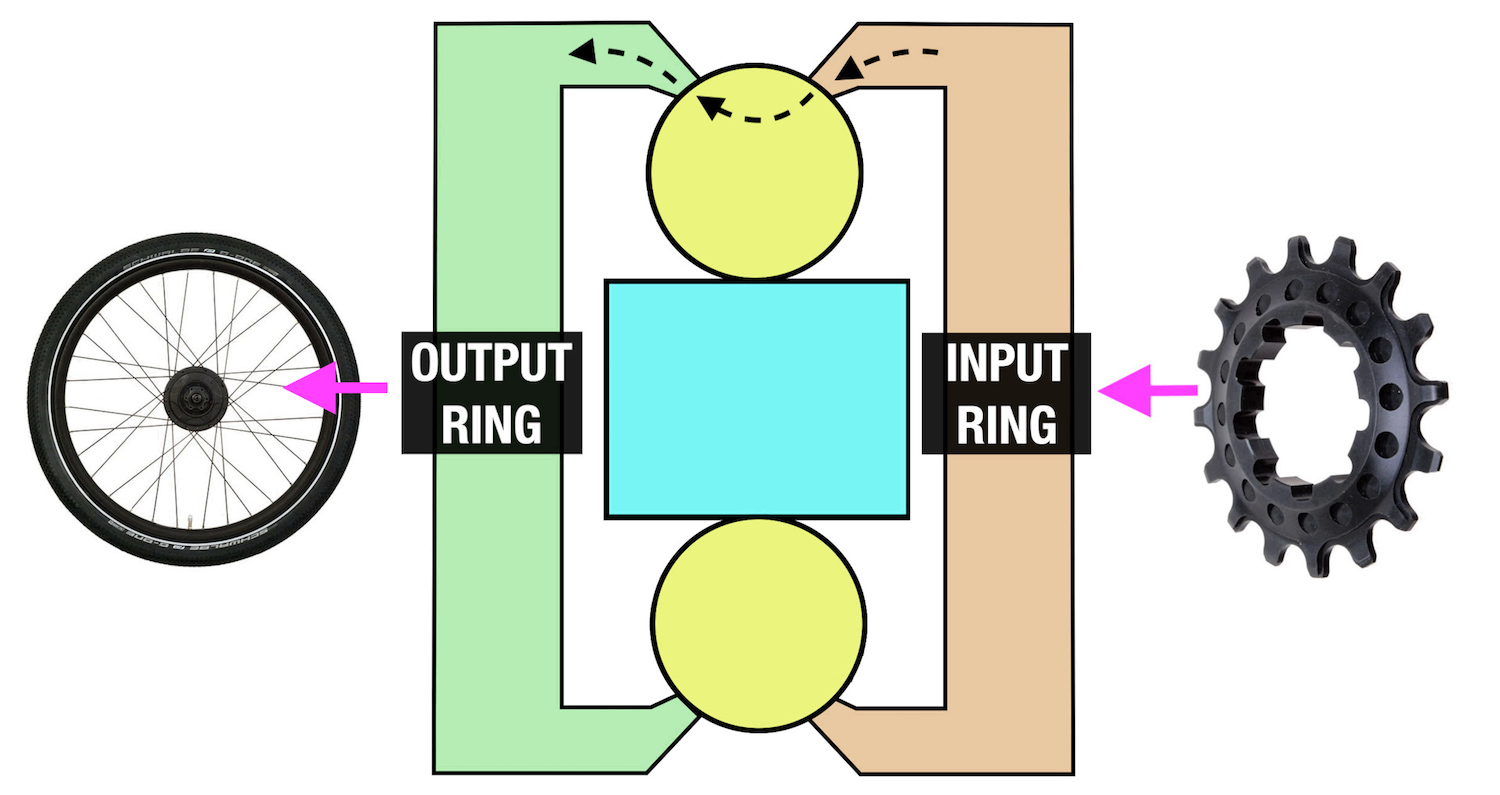Table of Contents
- What is a Bicycle CVT?
- NuVinci to Enviolo
- Advantages of Enviolo CVT Hubs
- The User-Friendly Design
- The Instant and Stepless Gearing
- The Electronic Shifting
- The Smooth and Silent Operation
- The Reduced Susceptibility to Damage
- The Suitability For All Weather Conditions
- The Low Maintenance Design
- The Relative Affordability
- The Reduction in Chain Hassle
- The Belt Drive Compatibility
- The Stronger Rear Wheels
- The High Input Torque Rating
- Disadvantages of Enviolo CVT Hubs
- Enviolo Hub vs. Rohloff Hub
- Enviolo Hub vs. Shimano Hubs
- How The CVT Works
- Summary
Internal gear bicycle hubs have been commercially available since 1898, and are typically found on bicycles used for transport, rather than high-performance sport.
They are a great alternative to derailleur gears, as they still offer multiple gear ratios, however, the critical drive components are all sealed away from the elements. This results in an incredibly low-maintenance drivetrain, that not only lasts longer but is less susceptible to damage.
Internal gear hubs normally use planetary gear sets to achieve different gear ratios, and you can get them with up to 14 different gears. These gears can be spread across a range even wider than a 1X MTB drivetrain.
You can also get continuously variable transmission hubs that have not just 14 gears, but an infinite number of gears between two set points.
In this article, we will examine the advantages and disadvantages of the Enviolo CVT hubs. We will later compare these hubs to the gold standard of planetary gear hubs (the Rohloff hub) as well as the closer-matched Shimano hubs. And lastly, I’ll explain exactly how this CVT hub works.
But first, what is a bicycle CVT?
What is a Bicycle CVT?
A bicycle CVT is a type of gearbox that eliminates the steps between each of your gears. Instead of shifting from your first gear to second, and second to third, the transition between gears is completely seamless, creating the smoothest shifting possible, and allowing you to ride at your perfect cadence – or crank rotation speed.
CVTs are common in industrial and automotive applications but are uncommon on bicycles. However, there are significant advantages to a bicycle CVT including a very user-friendly design, gear changes while stationary, no gear skipping, and an eerily silent operation.
And when paired with electronic shifting, you can even achieve fully automated shifting that keeps your legs spinning at your preferred cadence, no matter the speed, and without you even having to think about it.
So, where did this CVT technology come from?
NuVinci to Enviolo
A hub called the NuVinci 171 was released in 2006 by Fallbrook Technologies. At the time, it was about four kilograms (8.8lb), which was more than twice as heavy as any other gear hub.
Over time, the hubs were refined, the weight was brought down by 40%, the gear range was increased, and the hubs were engineered for a broader range of applications.
NuVinci was later rebranded to Enviolo as part of a bankruptcy restructuring.
These days the company is thriving. Over two million bicycles now use their CVT hubs, including many in bike share fleets around the world. You can find Enviolo-equipped bikes from over 150 different bike brands and a third of those use electronic shifting.
I’ve already touched on some of the advantages of internal gear hubs and CVTs, but it wouldn’t be a CyclingAbout article without a deep-dive analysis.
Advantages of Enviolo CVT Hubs
The User-Friendly Design
The big drawcard of a CVT hub is its user-friendly design. There is just one rotary shifter, and it’s highly intuitive to use. If you feel like your legs are spinning too fast, you wind the shifter one way, and if your legs are struggling up a hill, you wind it the other. It’s really as simple as that.
In addition, the Enviolo hubs can be shifted at any time (including while stationary) so it doesn’t ever matter if you’ve forgotten to shift.
The Instant and Stepless Gearing
As soon as you rotate the shifter, the CVT is instantly engaged. You never have to wait for any gear changes, and there is no chance of your chain skipping between gears.
The step-less gearing also ensures you’re never stuck in between gear ratios. This means your cadence can always be exactly as you desire.
The Electronic Shifting
If you use an eBike with a mid-motor, both electronic shifting, and automatic gear changes are possible.
First, you set your desired cadence in RPM on your smartphone (or eBike display). Then the motor and shifter will work together to automatically keep you at your perfect RPM – no matter the cycling speed.
And when you stop at traffic lights, the shifter will also put you in the perfect gear for take-off.
In addition, this system allows for ‘manual’ gear shifting in 5% increments simply by pressing up and down on the thumb buttons. This is particularly useful for riders who still want gear control, but have hand or wrist impairments. It’s also a great upgrade over the manual shifter too, for reasons we’ll discuss in the disadvantages section.
It’s worth noting that an electronic shifting retrofit is also possible on some eBike and hub combinations.
The Smooth and Silent Operation
Most internal gear hubs generate noise as the planetary gears are whirring away inside the hub body. Some hubs have more internal noise and vibrations than others, and there are even hubs out there that constantly tick while you pedal.
The Enviolo is the most silent gear hub of the lot – you almost never hear it working underneath you.
The Reduced Susceptibility to Damage
As there is no derailleur to knock or get things caught in, the Enviolo drivetrains are much less susceptible to damage. This is one reason why they’re so popular for bike fleets.
The Suitability For All Weather Conditions
Compared to derailleur gears, the Enviolo gear components are all hidden away and sealed from the elements. This reduces both component wear and drivetrain maintenance significantly.
The hubs can also be used down to -20° Celsius as well as in the planet’s hottest conditions.
The Low Maintenance Design
Incredibly, the Enviolo hubs are sealed for the life of the bike they are operating on. That means zero oil changes and zero bearing changes too.
The hub comes with a guarantee for 20,000km of use, but some users have reported exceeding 80,000km, which is similar to some Shimano Alfine or Nexus hubs.
The only maintenance required is cable replacements for the rotary shifter and possibly a service of the freewheel mechanism too.
The Relative Affordability
Compared to other gear hub options, the Enviolo products are considered affordable. And when you factor in the reduced need to replace worn components – these hubs become even more reasonably priced.
There are currently six different Enviolo hubs with prices starting at US $199 and maxing out at US $499. There is even a gearbox with a sprocket on both sides that’s intended for three-wheel cargo bikes.
When you spend more money, you essentially get a wider gear range, and more premium hub shell and internal components. You also get a higher input torque rating and hubs that can be fitted to heavier bikes.
The best way to compare Enviolo hubs is to look at the spec sheets on the website.
The Reduction in Chain Hassle
Provided you keep up your chain tension, you will also never experience dropped chains, skipping chains or chain slapping on your frame. It’s all the benefits of a single-speed bike but with infinite gear ratios.
The Belt Drive Compatibility
Better yet, you can pair Enviolo hubs with smooth and silent belt drivetrains. You’ve probably already noticed that most Enviolo-equipped bikes come with belts.
That’s because belt drive works out to be lower maintenance than chain drive, as it doesn’t require any grease or lubrication. As a result, belts stay very clean – you’ll never get black muck on your hands or pants ever again.
Belts also don’t rust, don’t stretch, and are very long-lasting too. Most cyclists go years without needing to replace a belt or sprocket. I’ve recently put 35,000km (22,000mi) into a belt drivetrain, which is more than three times further than I’d expect from a well cared for chain.
But if you prefer a lower-cost chain drivetrain, remember that you can fit a chain case with an Enviolo hub. This keeps water and grit away from your chain, and will likely double its wear life.
The Stronger Rear Wheels
Enviolo hub flanges are both the same height and are spaced equally from the frame on both sides. Unlike a typical cassette hub, this results in even spoke tension, building the strongest wheel possible.
The High Input Torque Rating
High-torque eBike motors are a great way to damage internal gear hubs. The good news is that the Enviolo hubs are rated up to 100Nm input torque, which is higher than the Shimano Nexus 5-speed hub (85Nm).
Some manufacturers such as EVELO have found the Enviolo Trekking hub will comfortably handle a 600-watt, 120Nm motor. According to the company, Enviolo hubs are their most reliable gear system with less than a 1% warranty replacement rate. They have so much confidence in the hubs they even extend the warranty duration.
Right, after all that I probably sound like a spokesperson for Enviolo, so we need to look at the disadvantages too.
Disadvantages of Enviolo CVT Hubs
The Drive Efficiency
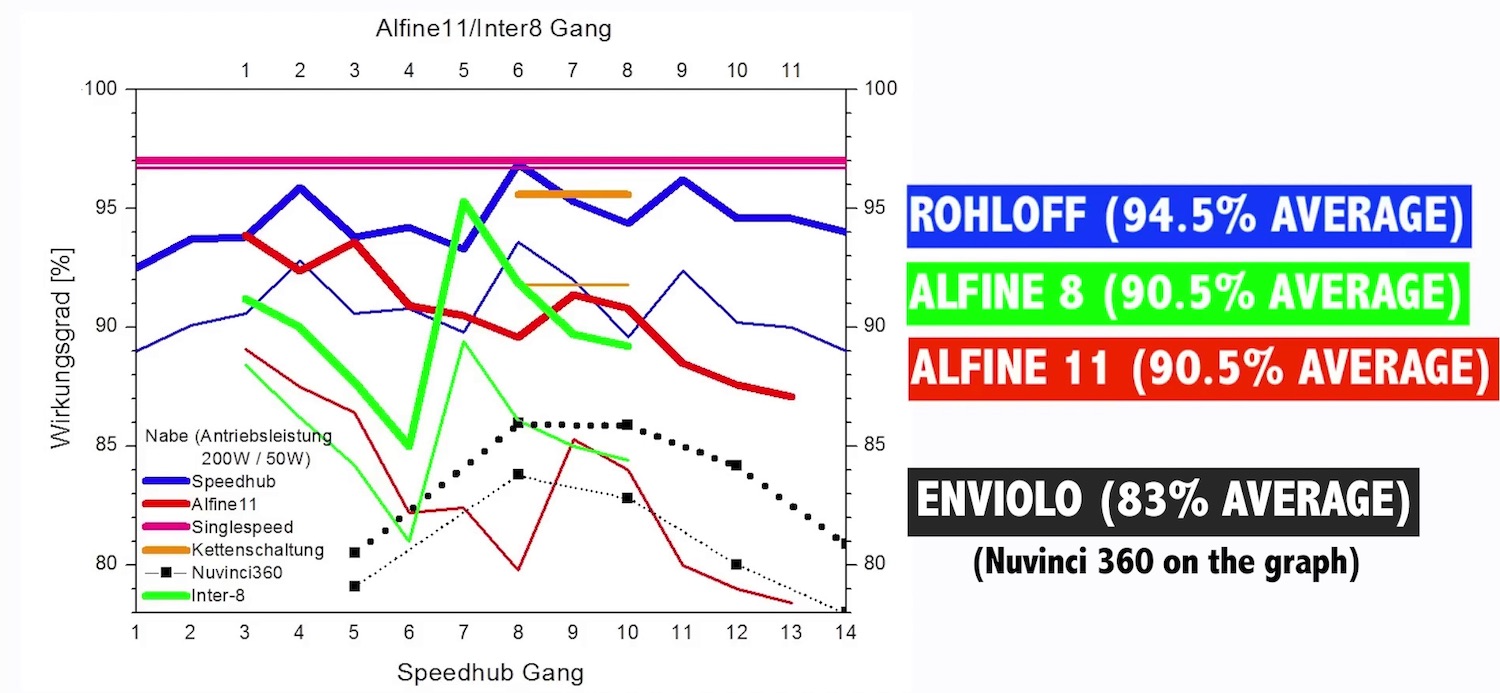
When you put pedal power into the Enviolo hub, some of that power is lost through the transmission.
Most internal gear hubs are somewhere between 3% and 7% less efficient than a perfectly clean and lubricated derailleur drivetrain (on average). In comparison, the Enviolo CVT hub is around 14% less efficient (on average).
Now, I know 14% sounds like a lot, but this is really not a big deal for many users, notably those who use their bikes for transport. And the benefit of always using the perfect cadence might even outweigh the drive efficiency loss.
When using a regular bike on a 5km flat trip along a bike path, I’ve calculated you might lose 20 seconds over 11 minutes compared to a Shimano internal gear hub (200W @ 100kg weight, gear 6). And if you were to use an eBike, you could expect slightly less range from your battery. But we’re talking a handful of kilometres here compared to other gearboxes – it’s nothing drastic.
This is obviously no big deal for short urban trips, but the battery range or time penalty might of course add up for long-distance use.
The Weight
These hubs are around 800 grams (1.8lbs) heavier than a Shimano Alfine internal gear hub with a similar gear range. And they are around 700 grams heavier than a Rohloff hub that offers a much wider gear range.
Now, I’ve said this before and I’ll say it again: bike weight affects cycling speed much less than you think. This is because 800 extra grams is likely just 1 or 2% extra weight to your overall system weight (body+bike+gear).
When we run the calculations, this weight difference will barely slow you down on the flat, and in the hills, it’s likely just a one or two-minute penalty per 100km of cycling.
Where weight becomes more important is if you frequently carry your bike up and down stairs.
The Heavy Shift Actuation
Some people find the Enviolo manual shifter to be quite stiff to rotate. And it’s even harder to change gears when the shifter gets wet.
If you have hand or wrist issues, the Shimano Alfine hubs with a trigger or Di2 shifter might be the better option. Or if you’re planning on using an eBike anyway, simply choose the Enviolo electronic shifter.
The Fast-Wearing Shift Cables

The Enviolo hub when coupled with the manual shifter is notoriously tough on cables. However, the duration the cables stay in good working condition is usually based on how smoothly and carefully you shift.
Here are a couple of things to keep in mind when shifting.
Firstly, make sure to back off on your pedal power for a split second to make your shifts. This takes a bit of time to master but becomes second nature in no time. Doing this allows the internal hub components to move with ease, putting less strain on your cables.
Secondly, you don’t want to force the shifting. You often cannot rotate the shifter across the full gear range when your bike is stationary, so only rotate it as much as the hub will allow. It’s also quite easy to strain the cables by rotating the shifter past the highest and lowest shift points, so try to be aware of these limits.
And lastly, maintain your cables! This involves keeping them clean and lubricated, making sure the cables have the appropriate tension, and checking for any sharp bends in the external housing.
If you keep these things in mind, your cables can last for years.
The Wheel Removal
Rear wheel removal is not quite as easy on an Enviolo bike.
With the electronic shifting, you just pull the connector cable and can remove your wheel with a spanner or Allen keys (depending on the hub model).
It’s a bit trickier with the manual shifter because two cables must be unhooked from the hub interface before dropping your wheel. Also, make sure to avoid bumping the hub interface as you can accidentally reduce the gear range of your hub.
If the hub interface is moved, the Enviolo channel has a video showing you how to reset it.
The Low Gear That’s Not That Low
The Enviolo hubs require a minimum front-to-rear sprocket ratio of 2:1. This results in a climbing speed of 8kph when you’re pedalling at 60RPM or a low gear of approximately 28 gear inches.
To put this into context, the climbing speed on many mountain bikes is often 30 to 40% lower. And even lightweight gravel bikes have a 10% lower climbing gear.
While this climbing gear is perfectly adequate for most urban uses, if you’re planning on cycling in hilly terrain without electric assistance (think 10% or steeper), the Enviolo climbing gear is likely not low enough.
The Gear Range
The gear range of the Enviolo hubs is between 256% and 380%. This simply means the top gear is 2.56 times (or 3.8x) bigger than the smallest gear.
To put these numbers into context, modern derailleur drivetrains exceed 500% gear range, and there are gearbox drivetrains that even exceed 600%.
Again, a smaller gear range works for most urban environments. That’s especially the case if you have electric assistance. Where it becomes a bit limited is if you want to climb both steep hills and have the gears for high-speed cruising too.
The Need To Send Away Enviolo Hubs For Repair
The Enviolo hubs are not a typical product found in bicycle stores outside of Europe, so you might need to send your hub to a service centre for repair. And yes, there is a big service centre in the United States.
In other regions, the bike companies that sell Enviolo-equipped bikes are usually able to help.
But it’s worth noting that problems with the hubs are quite uncommon, and most issues can usually be solved by changing the shifter or replacing the cables and/or freewheel mechanism.
Right, let’s find out what the extra US $1000 gets you if you were to upgrade to a Rohloff hub.
Enviolo Hub vs. Rohloff Hub
In short, buying a Rohloff ensures a longer-lasting hub, that’s lighter, much more efficient, and with both lower and higher gear ratios. It will also handle more torque from a mid-mount eBike motor.
Rohloff hubs are known for their long-term durability – there is even a Rohloff out there that has travelled 500,000km, which is five to ten times further than you can expect from an Enviolo.
When it comes to drive efficiency, the Rohloff has been tested to be over 94% efficient across its entire gear range compared to Enviolo’s 83% (average). With all things being equal, this results in around a 1.5kph difference in speed on the flat (200w, 100kg total weight) making the Rohloff undoubtedly the best option for long-distance use. It’s also the best way to get the maximum range from a battery.
The Rohloff also offers a 526% gear range compared to Enviolo’s 380%. This allows you to ride at both much lower and higher speeds.
The lowest permissible gear ratio can be set considerably lower on a Rohloff, making steeper hills much easier to conquer. In fact, the lowest permissible gear on the Enviolo is the equivalent of the sixth gear on a Rohloff!
The Rohloff is not only 700 grams lighter but it will handle up to 130Nm from a mid-drive eBike motor. In comparison, it’s 100Nm with some Enviolos.
There are more shifter options with the Rohloff too. If you want to use drop bars, you have the option between Cinq integrated shifters or even SRAM shifting using the Gebla Rohbox. And if you use an eBike, the Rohloff has electronic shifting too.
I hope you can now see where the value lies in a Rohloff hub. But the advantages of the Enviolo should not be taken lightly. The hub is quieter, more user-friendly, has automatic shifting, requires zero oil changes, and is offered at a fantastic price.
A fairer comparison might be to the Shimano hubs…
Enviolo Hub vs. Shimano Hubs
When we compare the Enviolo to the Shimano hubs, we get a much closer match-up in terms of price (US $200-500), gear range (409% vs 380%), lowest permissible gear ratio, and long-term durability (both around 80,000km).
It could be said that the Shimano feels snappier and sportier with its distinct gear changes, and the 800-gram weight saving helps in this regard too.
The drive efficiency difference is around 7%, which results in a 1kph faster cycling speed on the flat for the Alfine hub (200w, 100kg total weight, flat road).
The Alfine also uses a trigger shifter, which is often preferred over the Enviolo’s rotary shifter. And you don’t need an eBike to use the electronic shifting options for Shimano hubs too.
That said, the Shimano hubs are a bit noisier, the gears can skip if you don’t maintain the cables well, the auto shifting is not as seamless, the input torque rating is lower (85Nm), and the hubs require regular grease or oil changes.
And finally, let’s go inside the Enviolo hubs to see how they work.
How The CVT Works
The best way to understand how this hub works is to watch from 20:19 to 22:25 in my video.
We are looking at the hub from the back of the bike, so the sprocket is on the right side, and the disc rotor is on the left.
Here you can see the main shift components: there are two rings and a set of large metal spheres that sit on an idler. The input ring on the right side is connected to the rear sprocket, which is driven by your legs. And the output ring on the left side is what propels your bike forward.
Power from your pedals moves from your rear sprocket to the first ring, then into the spheres, and then from the spheres to the second ring, and finally to the wheel.
One reason why Enviolo hubs are somewhat inefficient is due to the metal spheres that are moving in a slightly different direction (and at slightly different speeds) to the two rings. This is known as “contact spin”.
Interestingly, these components are not directly touching. Instead, a specially-designed oil passes through microscopic spaces between the components, solidifying momentarily under pressure, and transferring the pedal power. This is why there is such little wear inside Enviolo hubs, and why you don’t need to service them.
To understand how this hub achieves its infinite gear ratios, we need to take a closer look at the spheres.
When you twist the shifter at the handlebar, the idler on the axle tilts the spheres. This changes the contact patch size on the spheres that the rings interact with.
When the contact patch is large on the right side and small on the left side, the wheel will spin slower than the rear sprocket (underdrive). When the contact patch is small on the right side and large on the left side, the wheel will spin faster than the rear sprocket (overdrive). And when the contact patches are identical on both sides, the wheel and sprocket will move at the same speed (1:1).
Summary
Congratulations, you now know virtually everything about Enviolo hubs, including how they work!
I think these hubs are super cool. They are intuitive to use, require little maintenance, are super silent, and the fact that they’re priced well only makes them more appealing. Even as a very experienced cyclist, the Automatiq gear shifting was an absolute delight to use.
Yes, the hubs are a bit heavy and inefficient. But for many user groups, I’m not really sure that matters.
If you’re after the best-performing and longest-lasting hub, you will still be best served with a Rohloff. And for a sportier ride experience, as well as more shifter options, I think the Shimano hubs are the way to go.



